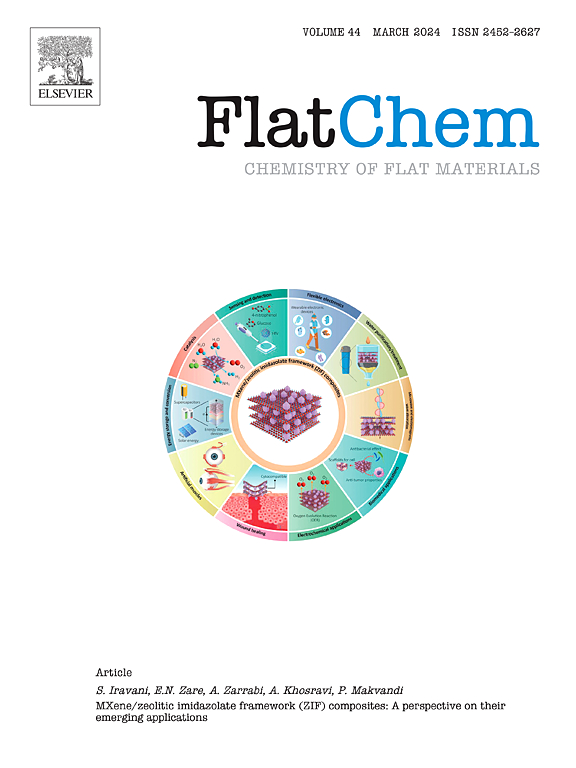Highly efficient overall photocatalytic water splitting in 2D heterostructure GaSe/ScGaSe3
IF 5.9
3区 材料科学
Q2 CHEMISTRY, PHYSICAL
引用次数: 0
Abstract
In the field of photocatalytic water splitting, the efficient utilization of solar energy is paramount. However, until now, the infrared and ultraviolet portions of the solar spectrum, which collectively constitute nearly half of the total solar energy, have remained underutilized, resulting in significant losses in solar energy utilization efficiency. Herein, we meticulously design a type-II band-aligned GaSe/ScGaSe3 heterostructure and meticulously examine its photocatalytic capabilities through rigorous first-principles calculations. The calculation results reveal the valence band and conduction band are distributed on two opposite surfaces with a large electrostatic potential difference produced by the intrinsic dipole of the photocatalyst. This surface potential difference, acting as an auxiliary booster for photoexcited electrons, This enables the GaSe/ScGaSe3 heterostructure to exhibit a minimal indirect band gap of 0.44 eV, ensuring effective photocatalytic water splitting reactions at all pH values under the action of the inherent electric field. Furthermore, the heterostructure possesses unique optical properties, demonstrating a high light absorption coefficient. It captures an impressive 10 % to 43 % of visible and ultraviolet light, significantly enhancing the utilization efficiency of sunlight. Encouragingly, our analysis shows that the corrected solar-to-hydrogen (STH) efficiency of this heterostructure is 33.77 %, marking a tremendous leap of 346 % compared to standalone GaSe monolayers. Additionally, the application of biaxial tensile strain further boosts this efficiency to an astonishing 36.46 %. These remarkable characteristics not only emphasize the immense potential and broad application prospects of the GaSe/ScGaSe3 heterostructure but also underscore its significance in advancing the field of photocatalytic water splitting.

求助全文
约1分钟内获得全文
求助全文
来源期刊

FlatChem
Multiple-
CiteScore
8.40
自引率
6.50%
发文量
104
审稿时长
26 days
期刊介绍:
FlatChem - Chemistry of Flat Materials, a new voice in the community, publishes original and significant, cutting-edge research related to the chemistry of graphene and related 2D & layered materials. The overall aim of the journal is to combine the chemistry and applications of these materials, where the submission of communications, full papers, and concepts should contain chemistry in a materials context, which can be both experimental and/or theoretical. In addition to original research articles, FlatChem also offers reviews, minireviews, highlights and perspectives on the future of this research area with the scientific leaders in fields related to Flat Materials. Topics of interest include, but are not limited to, the following: -Design, synthesis, applications and investigation of graphene, graphene related materials and other 2D & layered materials (for example Silicene, Germanene, Phosphorene, MXenes, Boron nitride, Transition metal dichalcogenides) -Characterization of these materials using all forms of spectroscopy and microscopy techniques -Chemical modification or functionalization and dispersion of these materials, as well as interactions with other materials -Exploring the surface chemistry of these materials for applications in: Sensors or detectors in electrochemical/Lab on a Chip devices, Composite materials, Membranes, Environment technology, Catalysis for energy storage and conversion (for example fuel cells, supercapacitors, batteries, hydrogen storage), Biomedical technology (drug delivery, biosensing, bioimaging)
 求助内容:
求助内容: 应助结果提醒方式:
应助结果提醒方式:


